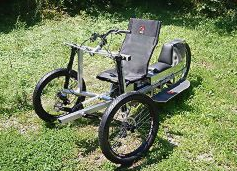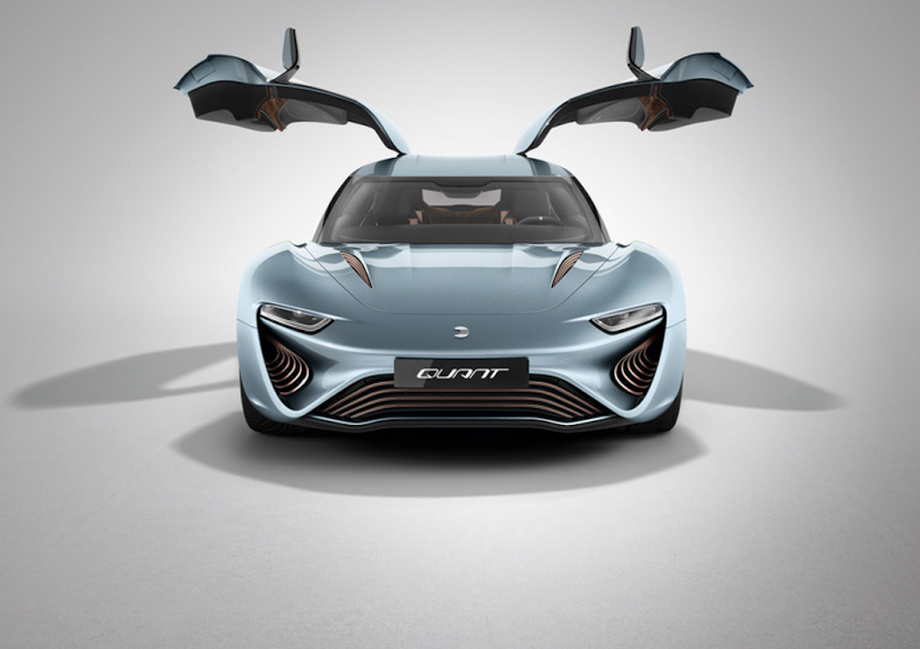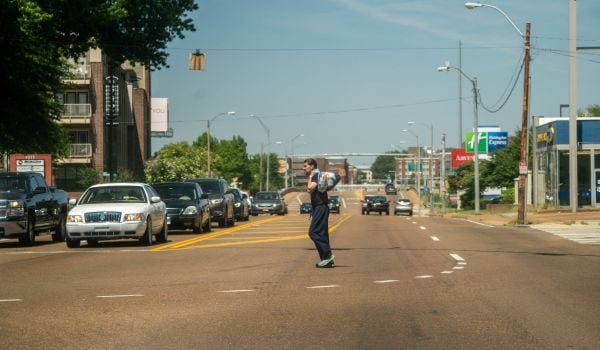New technological innovations in the auto industry promise a lot. To believe the press, cars could run on batteries, hydrogen fuel cells, water, solar panels, algae, air, electric coils buried in roads, or — the latest innovation — saltwater. Nanoflowcell’s saltwater-powered electric car, pictured above, was recently approved for testing on roads in Germany, after 14 years in development.
But will curing our addiction to oil really make cars that much better for cities? Ben Hamilton-Baillie, founding director of the UK-based Hamilton-Baillie Associates, a transport, traffic and urban design consultancy, isn’t so sure.
Let’s say the saltwater car emitted zero pollution and was silent. That would certainly improve city streets to an extent. “Pollution and noise are important, because pedestrians are highly sensitive to those factors in choosing whether a street is nice. If it’s noisy and you have to hold your children’s hands all the time and keep an eye on them, or if the air is unpleasant, you vote with your feet.”
But, he says, those issues are secondary to a more amorphous goal: pleasantness. This can be measured by the activities buildings generate around them — cafes, street life, people-watching. In other words, even clean, silent cars zipping by are still cars zipping by.
Hamilton-Baillie thinks that instead what we may need are two different classes of vehicles: one for inter-city transportation (which cars are great at), and one for intra-city transportation (which cars are not great at).
Consider this, he says: Sherlock Holmes in 1890 would have jumped in a horse-drawn cab to get across London, and he’d have been able to travel about 10 miles an hour. “Today, it’s exactly the same. The speed of journey across London in a car is between nine and 11 miles an hour,” he says. “For many years — the 1920s until today, engineers assumed that if only they could clear the crap out of the way, cars would increase their journey speed.” Not so. A Maserati driver doesn’t get through London any quicker than a cyclist, because they both have to stop at the same intersections. (Bike couriers with death wishes excepted.)
So why are we driving cars — many of which have top speeds of 120 miles per hour — in places where nobody can ever go that quickly? Hamilton-Baillie says that instead, cities should look into minicars — if not Smart cars, then even smaller electric vehicles, since they’d take up less space and allow people to interact more with their surroundings. We’ve heard lots about how the view from a bicycle seat looks different than the view from a car — why not a view from a slow-moving “neighborhood electric vehicle,” like those popular in retirement communities elsewhere in the Sun Belt? Why not mopeds, like the moped sharing system in beta in San Francisco?

Organic Transit’s Naked Elf
Our current cars are “ridiculously oversized. They take up too much space, [and] they’re also traveling around at a fraction of their efficiency, because they’re not designed for going 15 miles per hour.” Which would be faster than the hypothetical Maserati in London stuck at traffic lights.
Where we need cars are on freeways. They’re vital for our economy and social systems, Hamilton-Baillie says. But freeways — spaces dedicated for moving traffic, controlled by the state and governed by a set of rules — are the exact opposite of public city streets, which are naturally chaotic, unpredictable and open to a multitude of uses. The worst streets, he says, are the ones “where we muddle the boundaries between the highway and the public realm. Where we’re not sure which of these two worlds it fits into.”
The ideal car innovation, then, wouldn’t necessarily be one that runs on clean fuel or one that drives itself (though both are valid. It’d be one where, when you get to city limits, “you’d press a button and your car would transform itself … to become a different thing … in the same way that the vehicle that you take to the airport is not the vehicle you fly over the Atlantic.”
The Works is made possible with the support of the Surdna Foundation.

Rachel Kaufman is Next City's senior editor, responsible for our daily journalism. She was a longtime Next City freelance writer and editor before coming on staff full-time. She has covered transportation, sustainability, science and tech. Her writing has appeared in Inc., National Geographic News, Scientific American and other outlets.
Follow Rachel .(JavaScript must be enabled to view this email address)





_600_350_80_s_c1.jpg)


_on_a_Sunday_600_350_80_s_c1.jpeg)








